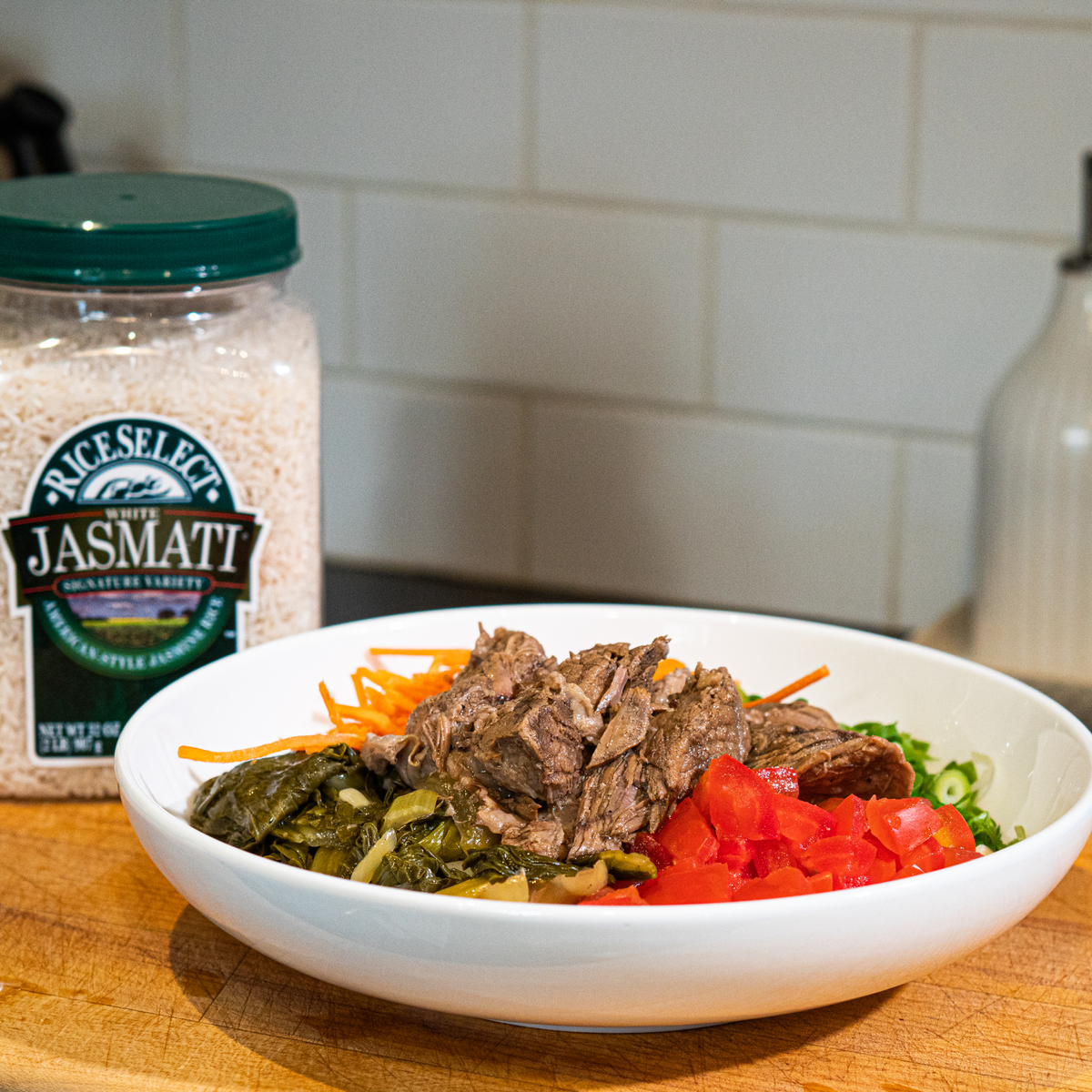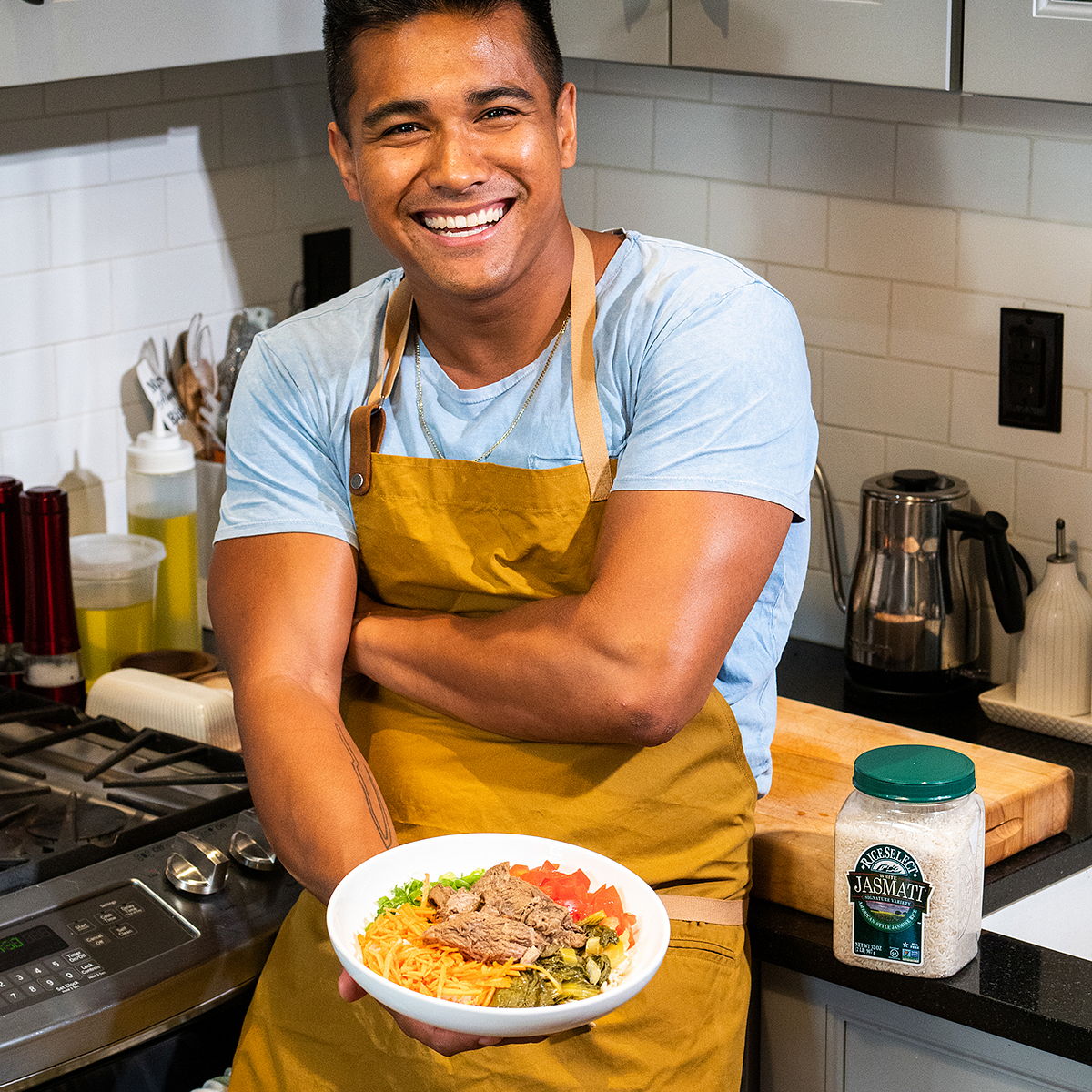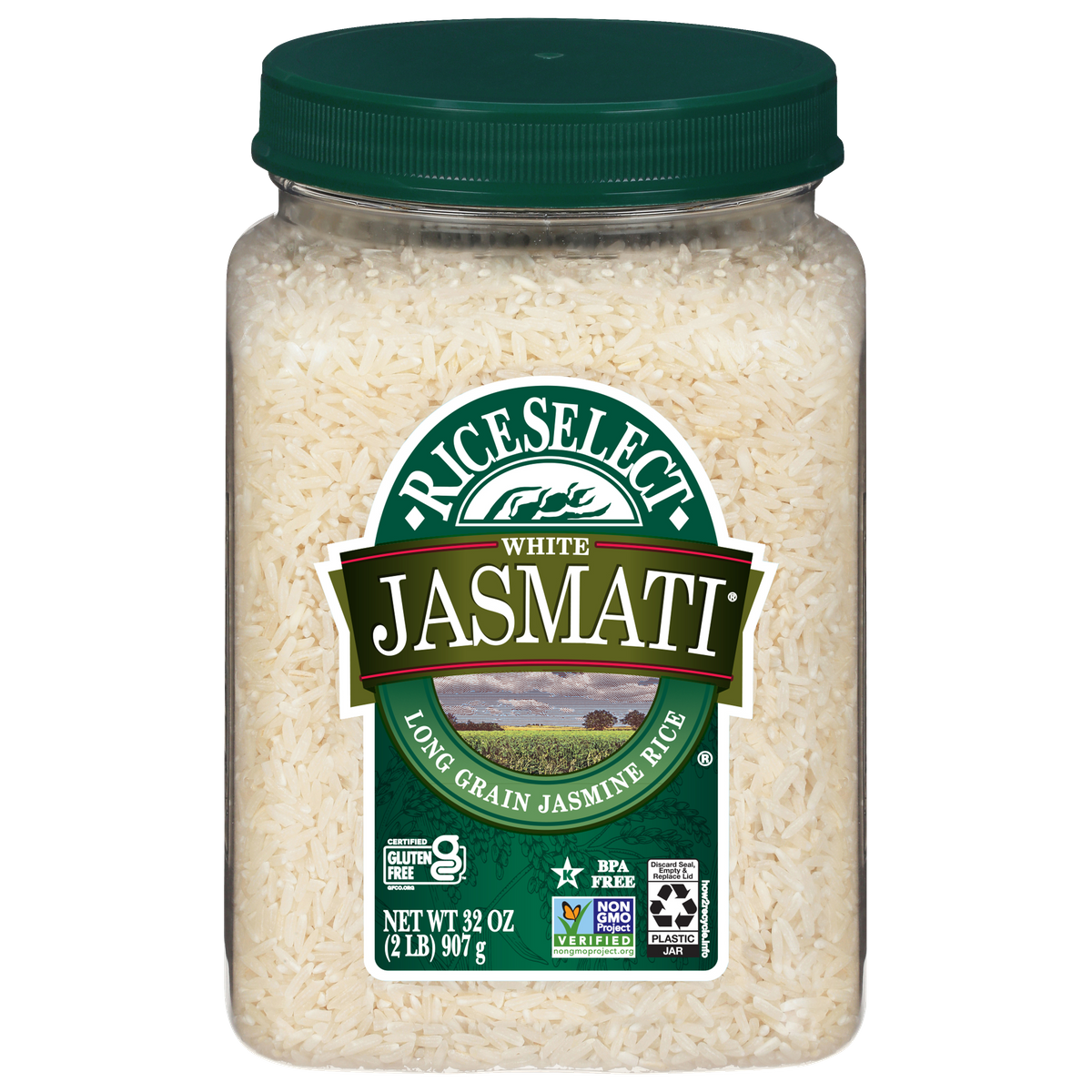Ingredients
- Main Ingredients:
Instructions
Cook Jasmati® Rice according to package directions and set aside for later at room temperature.
In a large stock pot combine the short rib, 32 ounces water, and sinigang packet.
Bring to a rolling boil and then reduce heat with lid on to medium low and cook for 2 hours or until short rib falls apart when grabbing it, set aside after done cooking.
Head a large sauté pan on high for 2 minutes without moving.
Add 1 cup of the short rib braising liquid with the bok choy and cook on high until wilted.
In a medium mixing bowl mix the cooked rice with coconut milk and set aside.
Build the bowl:
First, Place Rice as the base in a flat mound. Second, In the four corners of the bowl/platter/plate place the scallions in one area, the tomato in the other, the bok choy, and carrots in the other spots. Third, Pull the beef apart and place in the center on top of the rice. Lastly, Garnish with 1/4 cup scoop, or more, of the braising liquid.
Making Meals with Chef Jordan Andino
There’s no better introduction to Chef Jordan Andino than trying his signature dish! Sinigang Beef Bowl with Coconut Jasmati® Rice is the meal he takes pride in serving at his restaurant, Flip Sigi – Filipino Taqueria. He loves nothing more than bringing people together with delicious food, which is why he wants to share his classical fine-dining training, international upbringing, and diverse culinary experiences with home chefs like you! Check out how to make meals unforgettable with Kitchen Tips from Chef Jordan Andino!
Making Meals with Chef Jordan Andino
There’s no better introduction to Chef Jordan Andino than trying his signature dish! Sinigang Beef Bowl with Coconut Jasmati® Rice is the meal he takes pride in serving at his restaurant, Flip Sigi – Filipino Taqueria. He loves nothing more than bringing people together with delicious food, which is why he wants to share his classical fine-dining training, international upbringing, and diverse culinary experiences with home chefs like you! Check out how to make meals unforgettable with Kitchen Tips from Chef Jordan Andino!
About Bok Choy
Chinese white cabbage, often known as bok choy, is a staple of Asian cooking. The soft, dark green leaves and the crisp, off-white stems have a lovely, fresh crunch. The taste of the greens is somewhat bitter but not at all like spinach.
Bok choy is frequently offered in two sizes: tiny stalks that can be broken into smaller pieces, and bigger,mature stalks. The entire vegetable should be boiled to enhance flavor, even though the leaves can be eaten raw and added to salads.
Selection and Storage
Choose bok choy that has vibrant green leaves that are not wilting. The stalks have to be completely devoid of brown blotches, very firm, and off-white (or pale yellow, depending on the type). For up to 3 to 5 days, you can keep them in the refrigerator in a plastic bag that is just loosely closed. When you're ready to cook, wait to wash.
Preparing Large Bok Choy
Wash and completely dry the leaves and stems before handling the larger variety. Start by chopping away the leafy green portions, then stacking them. then make thin strips by cutting crosswise. Slice the stalks into 12 to 1-inch-long pieces, discarding the root portion that is 1 inch from the bottom. They can now be added at the end of cooking to soups, stews, or stir-fries.
Preparing Baby Bok Choy
Baby bok choy can be eaten whole or cut into smaller portions. Start by adding them to a large bowl of cold water and plunge a few times to remove any excess dirt. You can also rinse under running water.
Shake off excess moisture and thoroughly dry the exteriors. If cutting bok choy in half after washing, make sure the inside is dry too, especially if sauteing or stir-frying. Whole portions are great for braises or stews.
Other Meal Inspiration
If you are looking for some meal inspiration, why not learn how to make couscous?



